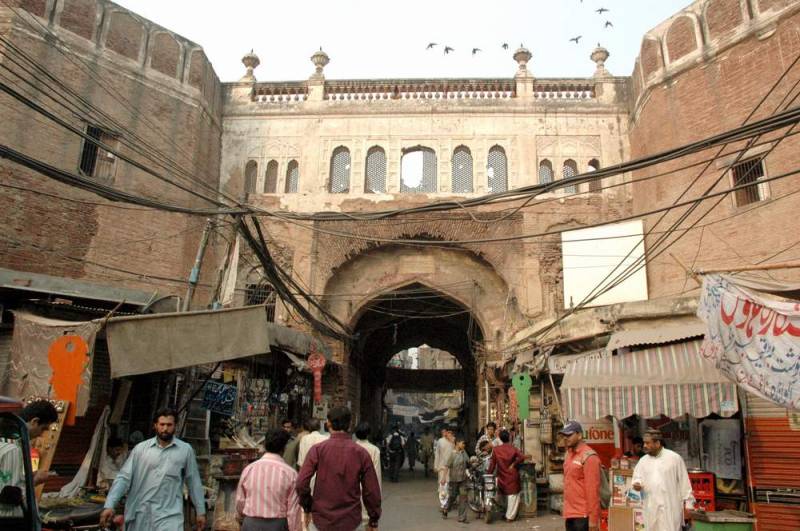
The Walled City of Lahore is a unique piece of land having matchless characteristics and panoramas that take away your breath and hold you mind for hours and hours. Anyone going into the city can never be bored because every turn, narrow street, chowk and a mohallah has its own story to tell and a marvellous setting. Walled City of Lahore, no doubt among the oldest settlements, is a cosmos of monuments, havelis, cuisines, bazaars, culture and traditions and all these features make it a living heritage museum.
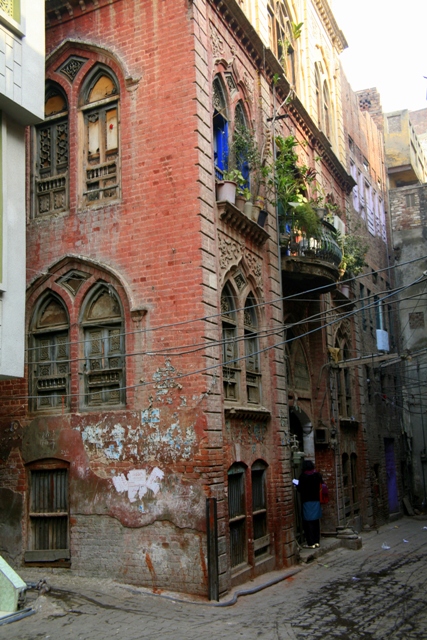
This city is enclosed within 13 gates and this feature makes it unique and matchless. Every gate has a different story to tell and trust me the people living inside these gates are also different from each other but the hospitality and generosity remains the same.
Let me introduce you to one of the wonderful gates of the city which is Lohari Gate. As you drive through the Circular Road, which was built by the British, you will come across this fort-like gate. It is huge and majestic and resembles the Alamgiri Gate of the Fort and as you traverse the huge gate you will see a different world…a world beyond imagination.
The name Lohari Gate sounds interesting and you must be thinking why it was named so? Like the case with most of the gates of the city of Lahore, myths are also associated with its name and historians have written different accounts about it. Some say that it was named Lahori because it faced the Ichhra or the original Hindu Lahore called Ichhra Lahore or Lohawar which was named after a Hindu God. Another account states that the gate was named so because of the blacksmiths and ironsmiths living in the area and thus it got popular as Lohari as the blacksmiths and the ironsmiths known as "Lohars" had their smithies inside the streets of this gate. To me, the second account seems more powerful because we still see ironsmiths inside this gate and Chowk Jhanda is still known for metal and iron workers.

I came across another view about this gate which states that somewhere in the 11th century, this city was badly affected by the wars between Mahmud of Ghazna and Raja Jai Pal rather it was all burnt. In 1021, the Sultan gave Malik Ayaz the throne of Lahore. It was at that time when the people started inhabiting this part and since then the gate was called Lahori Gate. It is also said that this was the old fort of Lahore and still the built of the streets gives a feel of the fort. Some historic books state that Lohari Gate is also one of the earliest gates of Lahore which Mahmud of Ghazna built. It is said that initially there were only five entrances to the Walled City and Lohari Gate was one of them.
Lohari Gate is also historically noteworthy because Ranjit Singh conspired with its gatekeeper during his siege of the city and it was secretly opened for him to enter and invade Lahore. There is also an interesting argument on the pronunciation, few call it “Lahori” and some say its “Lohari”, because of these myths. With the passage of time it got famous as Lohari Gate leaving all the myths behind. The marble plaque on the gate is strange too because both the names are engraved on it.
When we talk about the structure of this gate, it is said that it is not the original one which was built by Mughal emperor Akbar along with a fortified wall. Actually when the British took over the power here, they pulled down the 12 gates (Mori was not a gate at the Mughal times) and built the Circular Road and the Circular Garden there. Both there still exist today. In early 1900s the gates were rebuilt by the British and probably the gates were not built at the original locations where the Mughals had built them.
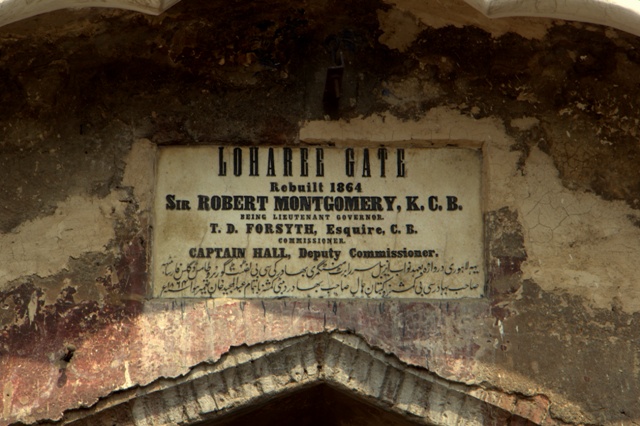
The Lohari Gate that we see now is changed in shape and structure. It is said that all the gates of the city were identical to the old Roshnai Gate near the Samadhi of Maharaja Ranjeet Singh and Badshahi Mosque. While these gates were rebuilt, their structures and designs were changes and that is why the six existing gates of Lahore differ in design and size.
Lohari gate is a giant structure and thank God that it is well intact and retains its majesty till now. This gate like Delhi Gate also has rooms inside its ground and upper portion. There were encroachments in the rooms and the gate’s structure was also derelict. The Walled City of Lahore Authority removed the 40 years old illegal occupation from Lohari Gate in 2016 and also conserved the gate. The rooms were also conserved and one of them has been converted into a Sarangi School (music academy) for the locals and whoever wants to learn the art of playing Sarangi.
Let me tell you an interesting fact which most of the people are unaware about. It is recorded in history that the earliest settlement of the Red Light Area was also inside Lohari Gate and most of the affluent dancing girls had built wonderful Havelis there. This fact is affirmed because the popular Chowk Matti in Lohari Gate was also named after a known dancer “Matti Bai”. With the passage of time, the Red Light area was reallocated to Chowk Jhanda, then Tibbi Gali and finally it settled in the Heera Mandi (which was not initially meant for the dancing girls).
Similarly, we still see the havelis and houses of wealthy dancing girls and one of them is the Noori Haveli which was a residence of the dancing girl called Poori Bai. The name was later distorted to Noori from Poori.
Do you know that Lohari Gates forms an attractive route for the tourists as well and while I am there at this gate I always find students from NCA and other foreign tourists touring around the streets of this gate? The reason for this is that so far the high architecture merit buildings in Lohari Gate have not been smashed by the ugly commercialisation and a lot of architectural wonders like jharokas, balconies and houses are seen there. Attractions for the tourists inside Lohari Gate are the Neevin Masjid, Chowk Bukhari, Chowk Jhanda, and metal workers market, Papar Mandi, Sutar Mandi Bazaar, Lal Haveli Square, Noori Manzil and the Conservation Bethak which is owned by National College of Arts now. The Bukhari Chowk was the courtesans’ square in the past.



People in love with metal décor items must visit this area for shopping. In some parts of Lohari Gate you will also see the manufacturing of the vermicelli (rice or flour thin noodles cooked in milk or with sugar on Eid-ul-Fitr).
There are also a number of Hindu temples in Lohari but not functional. This area also has the Kucha Kharasian which housed the millers who used to grind wheat, grams, corn and rice in hand and bullock mills to make flour.
Some of the interesting buildings there are the Mandir Nihal Chand, Dharamsala Sanathan and Katra Barkat Ali. Did you know that famous Pakistani singer Mehdi Hasan was born and bred in the Lohari Gate area? The Mosque Imam Din, Masjid Shah Din and the shrine of Pir Mubarik Ali Sahib are also located there. Right in front of this gate is the largest opticians' market of Lahore, the Flower Market and the Anarkali Bazaar. The tomb of Qutb-ud-Din Aibak, who was the first Muslim ruler of Subcontinent, is also in this Bazaar.
Muslim Masjid named after a Muslim scholar Maulana Muhammad Bakhsh Muslim is at the entrance of this gate and a small street from there leads you to the biggest gem stone market of Walled City. This gem stones market has a variety of stones and gems and men and women are seen there, buying those for rings and jewellery.
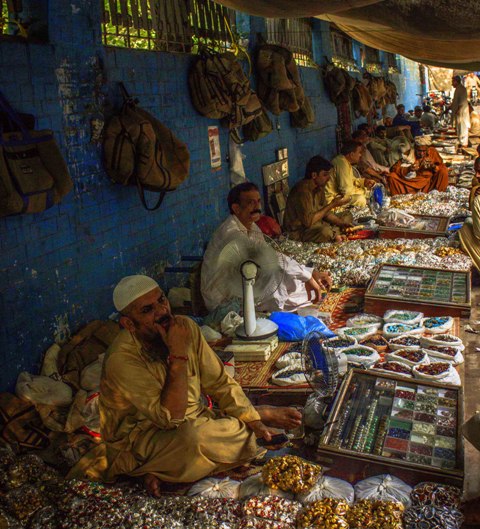
It is also famous for food points and there is a readymade food street inside the Lohari Gate. I am sure if this street is promoted it can serve as another food street like Gawalmandi and Fort Road Food Street. Walking on the mail trail of the Lohari Gate, you will be welcomed by the aroma of tempting foodstuff and that is really mouth-watering. All you want to eat is available there and also it’s hygienically cooked. Haji Sahib Nihari Walay, Sheikh Chatkhara and Sweets, Mehar Bashir Halwae and Hafiz Channay and Jeda Lassi are some of the most famous food spots of the area. The most fascinating thing about this place is that it is always opened from breakfast till dinner and then again the next day’s breakfast. People on the food shops and restaurants are working in shifts and thus the street never shuts down.
If you have not visited this place then do visit to get the real feel of the Walled City of Lahore and do not miss the Neevin Masjid which is a wonder of the city.
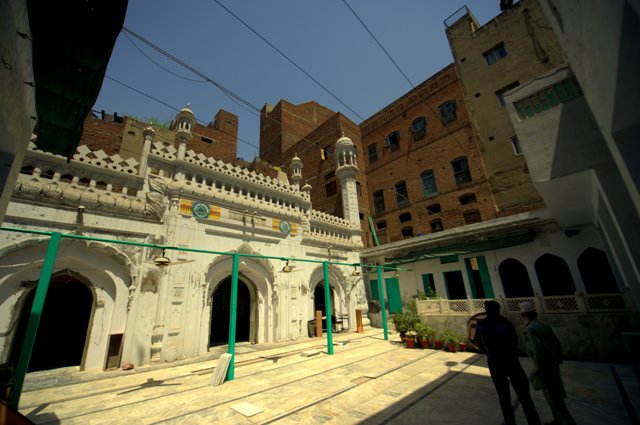

This city is enclosed within 13 gates and this feature makes it unique and matchless. Every gate has a different story to tell and trust me the people living inside these gates are also different from each other but the hospitality and generosity remains the same.
Let me introduce you to one of the wonderful gates of the city which is Lohari Gate. As you drive through the Circular Road, which was built by the British, you will come across this fort-like gate. It is huge and majestic and resembles the Alamgiri Gate of the Fort and as you traverse the huge gate you will see a different world…a world beyond imagination.
The name Lohari Gate sounds interesting and you must be thinking why it was named so? Like the case with most of the gates of the city of Lahore, myths are also associated with its name and historians have written different accounts about it. Some say that it was named Lahori because it faced the Ichhra or the original Hindu Lahore called Ichhra Lahore or Lohawar which was named after a Hindu God. Another account states that the gate was named so because of the blacksmiths and ironsmiths living in the area and thus it got popular as Lohari as the blacksmiths and the ironsmiths known as "Lohars" had their smithies inside the streets of this gate. To me, the second account seems more powerful because we still see ironsmiths inside this gate and Chowk Jhanda is still known for metal and iron workers.

I came across another view about this gate which states that somewhere in the 11th century, this city was badly affected by the wars between Mahmud of Ghazna and Raja Jai Pal rather it was all burnt. In 1021, the Sultan gave Malik Ayaz the throne of Lahore. It was at that time when the people started inhabiting this part and since then the gate was called Lahori Gate. It is also said that this was the old fort of Lahore and still the built of the streets gives a feel of the fort. Some historic books state that Lohari Gate is also one of the earliest gates of Lahore which Mahmud of Ghazna built. It is said that initially there were only five entrances to the Walled City and Lohari Gate was one of them.
Lohari Gate is also historically noteworthy because Ranjit Singh conspired with its gatekeeper during his siege of the city and it was secretly opened for him to enter and invade Lahore. There is also an interesting argument on the pronunciation, few call it “Lahori” and some say its “Lohari”, because of these myths. With the passage of time it got famous as Lohari Gate leaving all the myths behind. The marble plaque on the gate is strange too because both the names are engraved on it.
When we talk about the structure of this gate, it is said that it is not the original one which was built by Mughal emperor Akbar along with a fortified wall. Actually when the British took over the power here, they pulled down the 12 gates (Mori was not a gate at the Mughal times) and built the Circular Road and the Circular Garden there. Both there still exist today. In early 1900s the gates were rebuilt by the British and probably the gates were not built at the original locations where the Mughals had built them.

The Lohari Gate that we see now is changed in shape and structure. It is said that all the gates of the city were identical to the old Roshnai Gate near the Samadhi of Maharaja Ranjeet Singh and Badshahi Mosque. While these gates were rebuilt, their structures and designs were changes and that is why the six existing gates of Lahore differ in design and size.
Lohari gate is a giant structure and thank God that it is well intact and retains its majesty till now. This gate like Delhi Gate also has rooms inside its ground and upper portion. There were encroachments in the rooms and the gate’s structure was also derelict. The Walled City of Lahore Authority removed the 40 years old illegal occupation from Lohari Gate in 2016 and also conserved the gate. The rooms were also conserved and one of them has been converted into a Sarangi School (music academy) for the locals and whoever wants to learn the art of playing Sarangi.
Let me tell you an interesting fact which most of the people are unaware about. It is recorded in history that the earliest settlement of the Red Light Area was also inside Lohari Gate and most of the affluent dancing girls had built wonderful Havelis there. This fact is affirmed because the popular Chowk Matti in Lohari Gate was also named after a known dancer “Matti Bai”. With the passage of time, the Red Light area was reallocated to Chowk Jhanda, then Tibbi Gali and finally it settled in the Heera Mandi (which was not initially meant for the dancing girls).
Similarly, we still see the havelis and houses of wealthy dancing girls and one of them is the Noori Haveli which was a residence of the dancing girl called Poori Bai. The name was later distorted to Noori from Poori.
Do you know that Lohari Gates forms an attractive route for the tourists as well and while I am there at this gate I always find students from NCA and other foreign tourists touring around the streets of this gate? The reason for this is that so far the high architecture merit buildings in Lohari Gate have not been smashed by the ugly commercialisation and a lot of architectural wonders like jharokas, balconies and houses are seen there. Attractions for the tourists inside Lohari Gate are the Neevin Masjid, Chowk Bukhari, Chowk Jhanda, and metal workers market, Papar Mandi, Sutar Mandi Bazaar, Lal Haveli Square, Noori Manzil and the Conservation Bethak which is owned by National College of Arts now. The Bukhari Chowk was the courtesans’ square in the past.



People in love with metal décor items must visit this area for shopping. In some parts of Lohari Gate you will also see the manufacturing of the vermicelli (rice or flour thin noodles cooked in milk or with sugar on Eid-ul-Fitr).
There are also a number of Hindu temples in Lohari but not functional. This area also has the Kucha Kharasian which housed the millers who used to grind wheat, grams, corn and rice in hand and bullock mills to make flour.
Some of the interesting buildings there are the Mandir Nihal Chand, Dharamsala Sanathan and Katra Barkat Ali. Did you know that famous Pakistani singer Mehdi Hasan was born and bred in the Lohari Gate area? The Mosque Imam Din, Masjid Shah Din and the shrine of Pir Mubarik Ali Sahib are also located there. Right in front of this gate is the largest opticians' market of Lahore, the Flower Market and the Anarkali Bazaar. The tomb of Qutb-ud-Din Aibak, who was the first Muslim ruler of Subcontinent, is also in this Bazaar.
Muslim Masjid named after a Muslim scholar Maulana Muhammad Bakhsh Muslim is at the entrance of this gate and a small street from there leads you to the biggest gem stone market of Walled City. This gem stones market has a variety of stones and gems and men and women are seen there, buying those for rings and jewellery.

It is also famous for food points and there is a readymade food street inside the Lohari Gate. I am sure if this street is promoted it can serve as another food street like Gawalmandi and Fort Road Food Street. Walking on the mail trail of the Lohari Gate, you will be welcomed by the aroma of tempting foodstuff and that is really mouth-watering. All you want to eat is available there and also it’s hygienically cooked. Haji Sahib Nihari Walay, Sheikh Chatkhara and Sweets, Mehar Bashir Halwae and Hafiz Channay and Jeda Lassi are some of the most famous food spots of the area. The most fascinating thing about this place is that it is always opened from breakfast till dinner and then again the next day’s breakfast. People on the food shops and restaurants are working in shifts and thus the street never shuts down.
If you have not visited this place then do visit to get the real feel of the Walled City of Lahore and do not miss the Neevin Masjid which is a wonder of the city.

